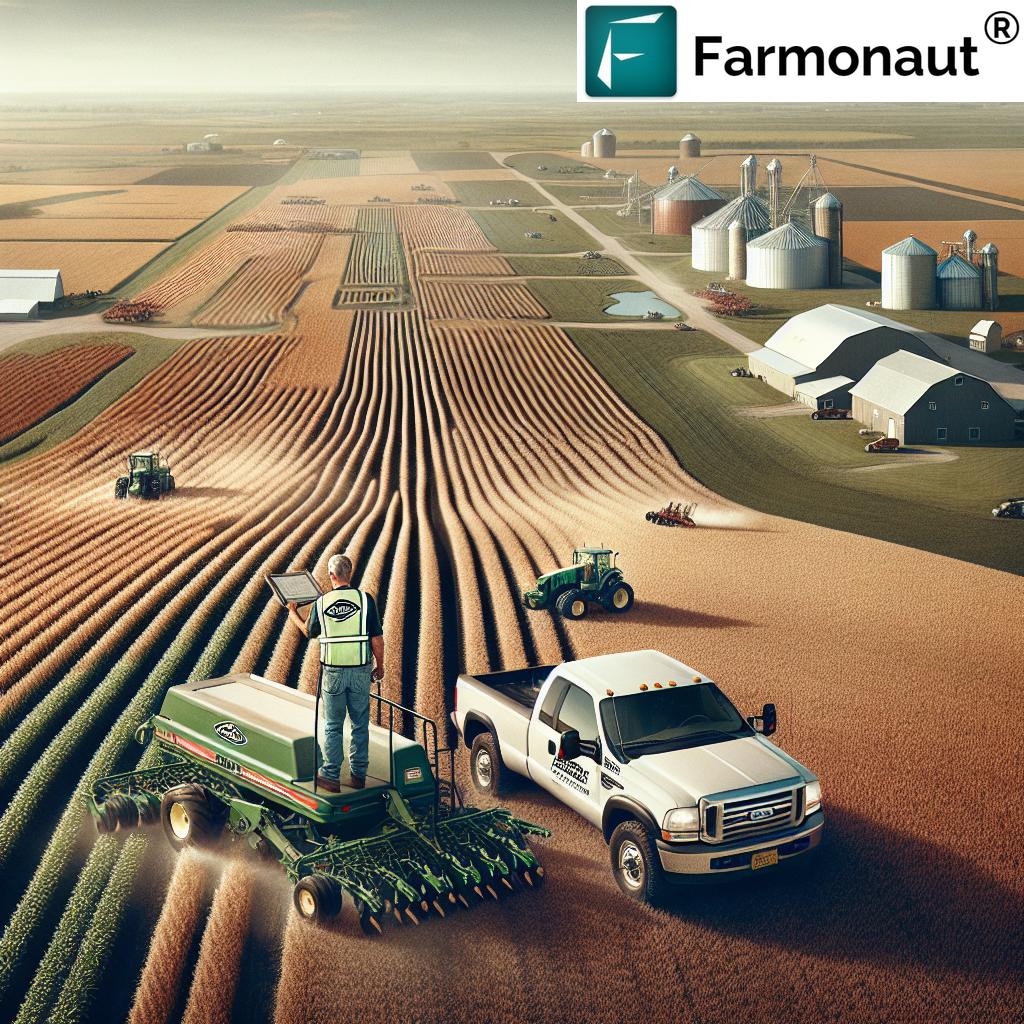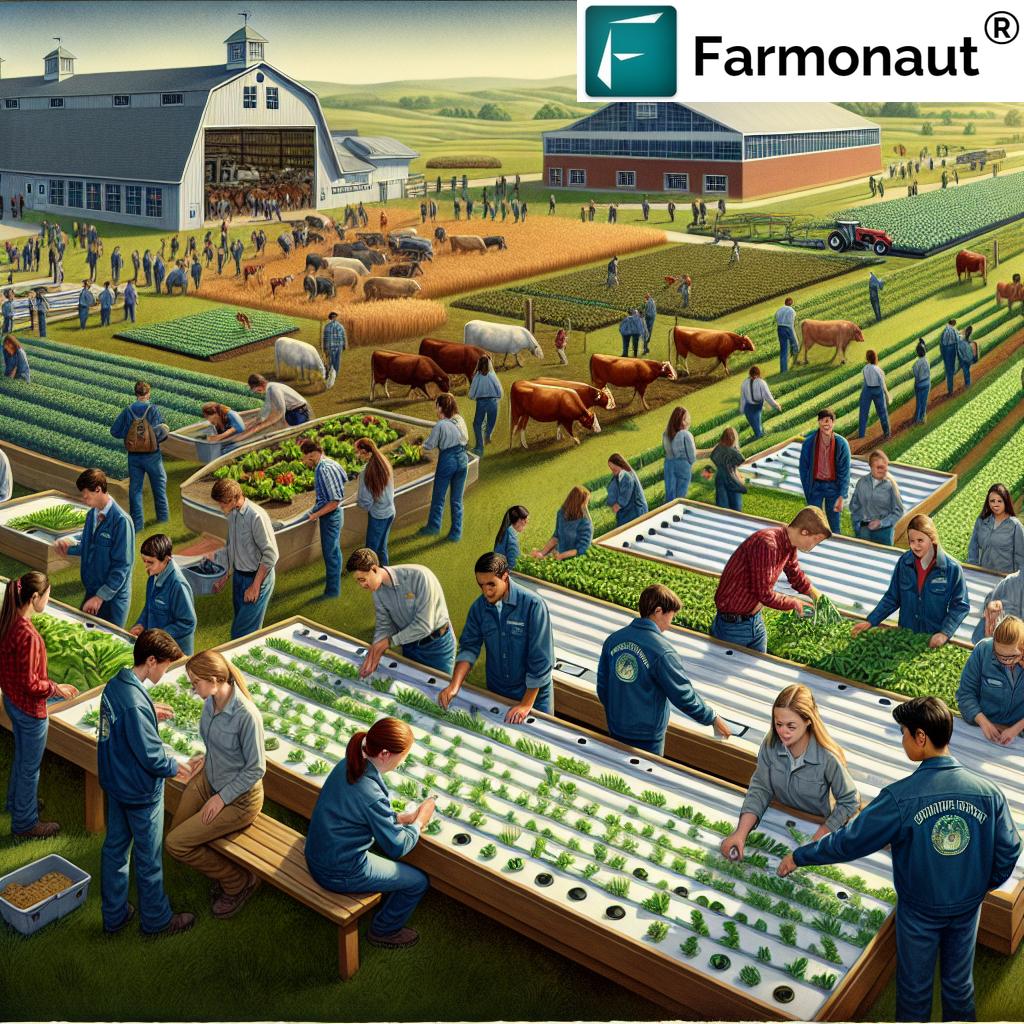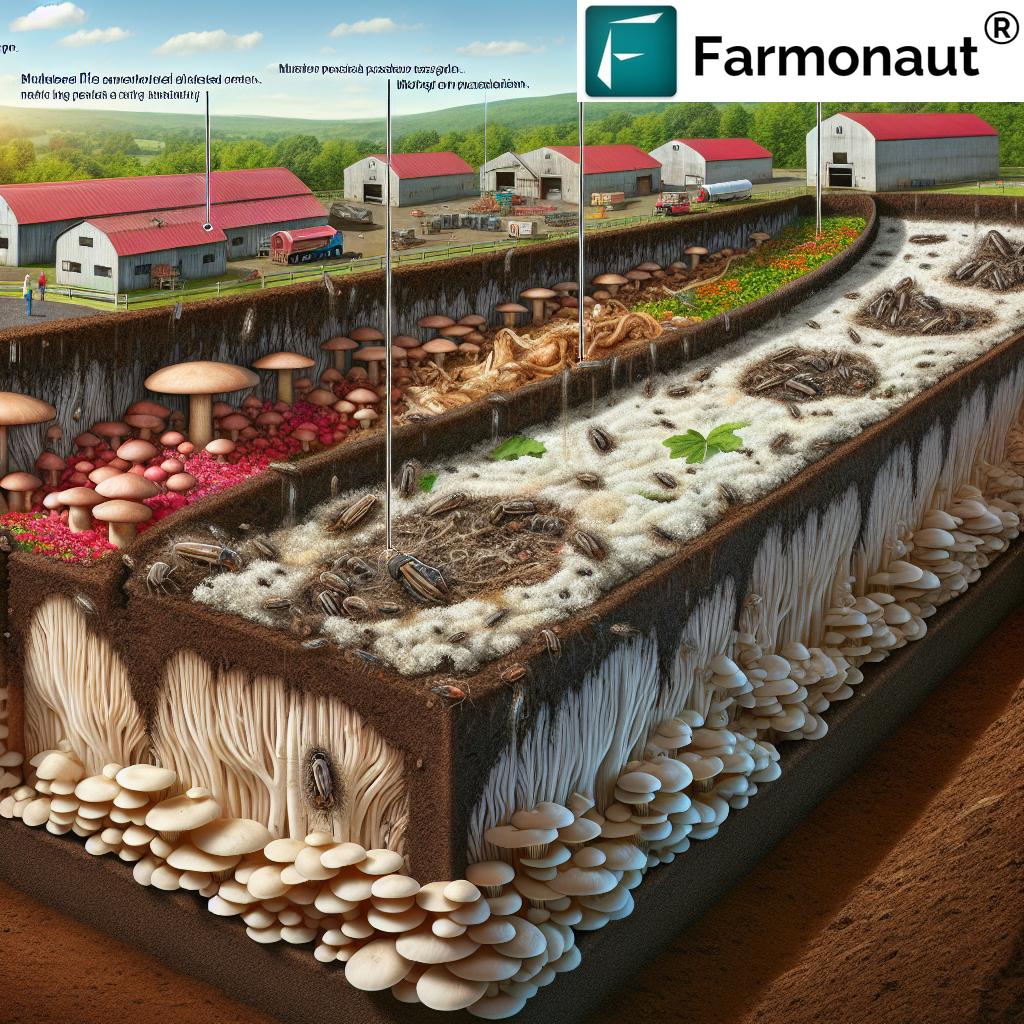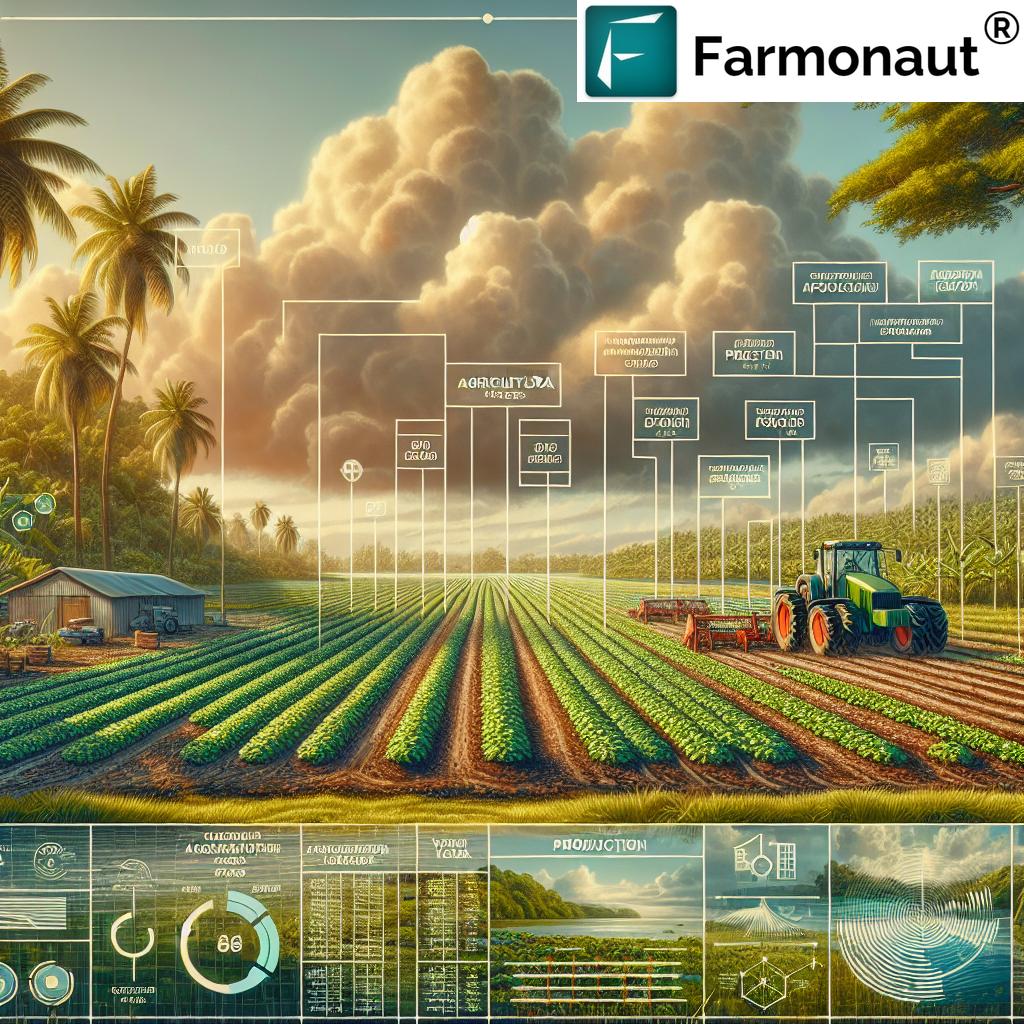Cornus Florida, Rubra & Nuttallii: Florida Farms 2026 – The Sustainable Significance of Native Dogwoods
Introduction: Why Cornus Varieties Matter in 2026
Cornus florida—commonly known as flowering dogwood—remains a keystone species within Florida‘s forests and the broader United States in 2026. As environmental restoration, agroforestry, and sustainable farming reshape rural landscapes, these native trees and their relatives (Cornus florida rubra, Cornus nuttallii, and Cornus controversa variegata) are recognized for their ecological, economic, and aesthetic contributions. This comprehensive overview will explore their botanical traits, applications, restoration impact, and the ways in which smart technologies—such as those offered by Farmonaut—integrate with sustainable management to support resilient, biodiverse, and profitable agricultural systems in 2026 and beyond.
Whether you’re managing a forest, operating an agroforestry project, or interested in aqua farms integration, read on to discover the unique value of these native dogwoods and how to maximize their role in modern restoration and production landscapes.
“Cornus florida supports over 36 bird species by providing essential food and shelter in sustainable agroforestry systems.”
Botanical Overview & Varietal Differences: Cornus florida, Rubra, and Nuttallii
Understanding the Florida Dogwoods and Relatives
The genus Cornus stands for resilience and natural beauty in North America‘s forested and agricultural regions. In Florida and neighboring states, dogwoods serve multifaceted roles within ecological and commercial land management.
Cornus florida (Flowering Dogwood)
- Appearance: A small, deciduous tree (5–12 meters tall), commonly known for its four striking white spring blossoms and long-lasting, vibrant red autumn berries.
- Ornamental Value: The dazzling white floral bracts, heart-shaped leaves, and red fruits make it prized for landscapes and beautification projects.
- Habitat & Soil: Thrives in slightly acidic to neutral soils, showing adaptability to a broad spectrum of conditions.
- Ecological Role: Provides early spring nectar for pollinators and autumn berries for wildlife.
Cornus florida rubra (Pink-Flowering Dogwood)
- Varietal Difference: A horticultural variety of Cornus florida distinguished by its eye-catching pink to reddish flowers in spring.
- Aesthetic Appeal: The vibrant hues offer greater diversity for urban and rural planting schemes, enhancing visual impact in both agricultural and residential landscapes.
- All Other Traits: Mirrors wild-type dogwood in habitat and ecological value.
Cornus nuttallii (Pacific Dogwood)
- Native Range: The western United States, primarily the Pacific coastal region.
- Growth: A larger tree than its eastern counterparts, reaching up to 20 meters.
- Flowers & Berries: Features showy white bracts and clusters of berries, serving as canopy layering and habitat in mixed forests.
- Significance: Integral to forest canopy dynamics and pollinator support.
Cornus controversa variegata (Variegated Giant Dogwood)
- Ornamental: Unique variegated foliage featuring creamy-white margins, striking in landscaping and forest-edge plantings.
- Biodiversity: Less common, but often used to increase diversity and aesthetic complexity in restoration buffers.
The Role of Cornus Species on Florida Farms in 2026
Florida farms and agricultural systems increasingly prioritize sustainable forestry and agroforestry models. Cornus florida, along with rubra and nuttallii, holds expanded importance in integrated planting schemes and regenerative land management.
- Habitat restoration: These species are now standards in reforesting degraded lands, especially post-mining sites and areas affected by deforestation or natural disasters.
- Buffer & streambank restoration: Often planted along riparian buffer zones to reduce erosion, improve water quality, and help filter agricultural runoff into waterways.
- Biodiversity & ecology: Dogwoods support bird and pollinator populations, add to structural diversity, and create valuable microenvironments for soil organisms.
- Sustainable yield diversification: Beyond ecological functions, the berries and ornamental aspects offer economic incentives for landowners.
As agroforestry systems embrace wider biodiversity in 2026, dogwoods stand out as reliable contributors to both ecological and owner objectives.
Comparison Table of Cornus Varieties for Sustainable Agroforestry
| Variety/Species | Native Range | Growth Rate (Years to Maturity) | Ecological Benefits | Restoration Suitability (1–5) | Common Uses | Estimated 2025+ Availability |
|---|---|---|---|---|---|---|
| Cornus florida | Eastern United States (including Florida) |
5–8 |
|
5 (Excellent restoration value) |
|
Widely available in nurseries and native plant programs |
| Cornus florida ‘Rubra’ | Eastern United States (cultivated variety) |
5–8 |
|
4 (Very good, especially for visual impact) |
|
Readily propagated; moderate commercial supply |
| Cornus nuttallii | Pacific Northwest, Western United States | 8–12 |
|
4 (Excellent in native range, less so elsewhere) |
|
Available mainly regionally in the western U.S. |
Conclusion: Each Cornus variety offers unique benefits for restoration, agroforestry systems, and land management in 2025 and beyond, supporting resilient and productive ecosystems on Florida farms and throughout the United States.
Ecological Value: Forests, Habitat, and Biodiversity Support
Cornus florida and its varieties continue to serve as biodiversity anchors within forests and agroforestry systems. Let’s explore their key roles:
- Pollinator Support: Early spring blossoms of dogwoods provide vital nectar and pollen when few other trees are in bloom.
- Berries for Wildlife: The vibrant red autumn berries of Cornus florida are a critical food source for over 36 native bird species, as well as mammals like squirrels and chipmunks.
- Canopy & Understory Interactions: Species like nuttallii strengthen forest canopy layering, improving microclimates for cohabiting plants and creatures.
- Soil Improvement: The leaf litter and organic matter from dogwoods contribute to soil quality, promoting microbial life and nutrient cycling.
- Riparian Health: Planting dogwoods along streams (riparian buffers) helps to reduce erosion and filter agricultural runoff.
- Biodiversity Increase: The introduction of dogwoods, especially in restoration, is shown to increase diversity of native shrubs, insects, and birds.
Cornus controversa variegata adds extra visual and biological diversity due to its unique leaf coloration, attracting different insect species and offering varied shelter.
Cornus and Forestry: Land Rehabilitation & Understory Diversity
The restoration of degraded lands—particularly in the southern United States and Florida—has placed the Cornus genus center-stage in modern forestry management:
- Soil Stabilization & Erosion Control: Dense dogwood roots prevent soil from washing away on slopes, old mining sites, or flood-prone areas.
- Reforestation: Due to their adaptability to different soil conditions, dogwoods are often included in reforestation efforts, especially when paired with native hardwoods.
- Understory Diversity: Flowering dogwoods create a shaded microclimate, supporting moss, ferns, and shade-tolerant crops or forage species.
- Buffering & Edge Plantings: Their structure and lush foliage are ideal for establishing forest edges and transition zones.
In 2026 and beyond, the use of Cornus florida, rubra, and nuttallii within managed forests is expanding—from seedling installations to mature tree preserves supporting wildlife corridors and integrated ecosystems.
Sustainable Agroforestry Systems: Integrating Dogwoods in Agriculture
Agroforestry systems benefit immensely from the inclusion of dogwoods. Here’s how Cornus florida and its relatives fit into sustainable agricultural operations in Florida and beyond:
- Shade & Microclimate: Dogwoods’ modest canopy provides partial shade for vulnerable crops, medicinal herbs, or grazing animals, supporting pasture health and moisture retention.
- Forage Resource: The berries and fallen leaves of dogwoods can supplement diets for grazing livestock, like the Florida cracker cow—a heritage breed key to sustainable silvopasture systems.
- Windbreak and Shelterbelt: In farmstead layouts, dogwoods are valued for their dual aesthetic and practical wind-breaking capabilities.
- Pest Management: Early-flowering dogwoods attract beneficial insects (like bees and predatory wasps), enhancing natural pest control.
- Soil Health: Organic contributions from dogwood leaf litter and deep root systems promote soil aggregation and mycorrhizal networks—crucial for long-term agricultural productivity.
The combination of economic and environmental value positions dogwoods as foundational species in agroforestry models driving 2025 sustainability initiatives.
Florida Aqua Farms: Aquaculture, Land Management & Dogwoods
Florida aqua farms and integrated aquaculture are on the rise, especially as landowners combine fish farming with pasture, crop, and tree systems. Here’s how Cornus species add value:
- Filtration & Water Quality: Dogwood planting along pond margins helps reduce nutrient runoff, filtering contaminants and stabilizing banks.
- Habitat Creation: Overhanging branches and leaf litter foster habitat for beneficial amphibians, insects, and shade-loving aquatic species.
- Aesthetics & Microclimate: Varieties like C. florida rubra and C. controversa variegata add visual interest, while also cooling ponds and reducing evaporation stress on water bodies.
- Ecological Synergy: Trees, crops, and ponds in concert create highly resilient, multifunctional landscapes supporting climate adaptation, wildlife corridors, and economic diversification.
With aquaculture and land restoration landscapes expanding in 2026, the role of dogwoods in integrative farm design is set to grow even more important in Florida and across the United States.
Additional Applications & Indirect Environmental Benefits
- Infrastructure & Rehabilitation: Dogwoods’ role in mining site reclamation ensures soil recovery and paves the way for future infrastructure projects with higher ecological integrity.
- Defence & Buffering: Forestry management around sensitive defence installations can incorporate native dogwoods to enhance soil protection, reduce observability, and create natural, low-maintenance buffers.
- Economics: Renewable ecosystem goods—berries, foliage, and potentially medicinal extracts—add hidden economic contributions beyond timber or crop value.
- Erosion Reduction: The extensive root systems of dogwoods reinforce land stability. Their flexible stems and dense leaf litter soften rainfall and wind damage, helping maintain topsoil even in challenging climates.
- Support for Pollinators and Birds: Sustained pollinator ecosystems are vital for nearby agricultural yields, especially as wild bee populations decline elsewhere.
Smart Satellite Solutions: Empowering Land Management (Farmonaut)
In the era of digital agriculture and ecological stewardship, we at Farmonaut support farmers, foresters, and land managers with advanced, satellite-based monitoring for informed decision-making. Our tools are available via Web App, Android, and iOS Apps.
- Satellite Crop and Tree Health Monitoring: Real-time, multispectral imaging tracks forest health, dogwood establishment, and restoration outcomes.
-
AI-Based Advisory (Jeevn AI): Our AI-driven system delivers tailored management tips based on the latest climate data, pest trends, and vegetation indices.
Learn about our Carbon Footprinting Tool—monitor and optimize carbon impact on your farm or forest! - Blockchain Traceability: Ensure supply chain authenticity, a key feature for those restoring or planting high-value trees; see Traceability in action.
- Fleet Management: Monitor equipment, vehicles, and personnel movements across large restoration or reforestation sites. Fleet Management streamlines logistics and cost.
- Large-Scale Farm Management: Administer vast, multi-plot operations efficiently—ideal for those managing agroforestry belts including Cornus species. Discover how Large Scale Farm Management accelerates monitoring.
- API & Integration: Plug our API into your custom dashboard or agricultural software—details at our API Developer Docs.
These digital tools help maximize the restoration and management value of Cornus florida and its relatives in dynamic 2026 landscapes.
Farmonaut App, API, and Advisory Solutions for 2026-Ready Land Management
Integrating Cornus varieties with Farmonaut technologies delivers unmatched value for land managers and sustainability-minded producers:
- Track Restoration Progress: Satellite data reveals the success of dogwood establishment, shade provision, and habitat creation in real conditions.
- Secure Financing: Our Satellite-Based Crop Loan & Insurance Verification makes it easier to access funding for reforestation, soil improvement, or native planting projects.
- Precision Advisory: The Crop Plantation & Forest Advisory App delivers specific recommendations for planting densities, timing, and agroecological arrangements using dogwoods.
- Environmental Impact Tracking: Monitor and reduce your carbon footprint when planning large-scale dogwood or mixed forest installations!
These Farmonaut features ensure that dogwoods continue to enhance ecosystems as productive, beautiful, and resilient assets in the years ahead.
“In 2025, restoration projects using Cornus florida increased native shrub diversity by 28% on Florida farms.”
Farmonaut Subscription and Pricing
For ongoing support of your Cornus restoration, agricultural, or forestry programs in Florida and beyond, Farmonaut offers flexible, mobile-responsive, subscription packages:
Frequently Asked Questions (FAQ): Cornus Species, Restoration, and Sustainability
-
Why are Cornus florida and its varieties so important for Florida in 2026?
They offer powerful ecological and economic roles—stabilizing soil, restoring degraded areas, providing food for wildlife, and supporting pollinators. Their adaptability and beauty also boost value for nurseries and landowners. -
What makes Cornus florida rubra different from standard Cornus florida?
“Rubra” refers to the pink, rose, or red flower bracts, making these trees prized for ornamental and landscaping use, while retaining all ecological benefits. -
Is Cornus nuttallii suitable for Eastern US or Florida restoration?
While C. nuttallii is excellent for the Pacific Northwest, it’s less suited to Florida’s climate and soils. Use Cornus florida or rubra for southeastern projects. -
How do dogwoods help reduce soil erosion?
Their root systems bind and strengthen soil, especially along slopes, waterways, and disturbed areas, preventing runoff and topsoil loss. -
Can I monitor restoration progress and soil improvements using technology?
Yes! Farmonaut’s satellite and AI-powered tools track vegetation health, detect canopy failures, and help plan interventions for maximum restoration success. -
How does integrating dogwoods in aquaculture landscapes help farms?
Tree buffers around ponds filter runoff, enhance water quality, stabilize banks, and provide habitat for beneficial organisms, all while contributing to the farm’s aesthetics and biodiversity. -
Are these Cornus species available for purchase in 2026?
Yes, especially Cornus florida and rubra—widely available from nurseries active in native and restoration plant programs. -
Can Farmonaut’s platform be integrated with existing forestry or agricultural management software?
Absolutely. Our open API and comprehensive developer docs allow seamless customization, enhancing your existing digital infrastructure.
Summary: The Lasting Significance of Cornus florida and Its Varieties
Cornus florida, rubra, and nuttallii remain essential to Florida’s evolving forestry and agroforestry systems. Their ecological benefits—such as supporting pollinators, stabilizing soils, increasing biodiversity, and enhancing water quality—make these dogwoods critical for sustainable land management into 2026 and beyond. When combined with data-driven management solutions (such as those from Farmonaut), dogwoods offer a pathway to productive, resilient, and beautiful landscapes that simultaneously enhance ecosystem services and economic returns. In an era focused on restoration and regenerative agriculture, these species hold unmatched importance for Florida farms and beyond.














